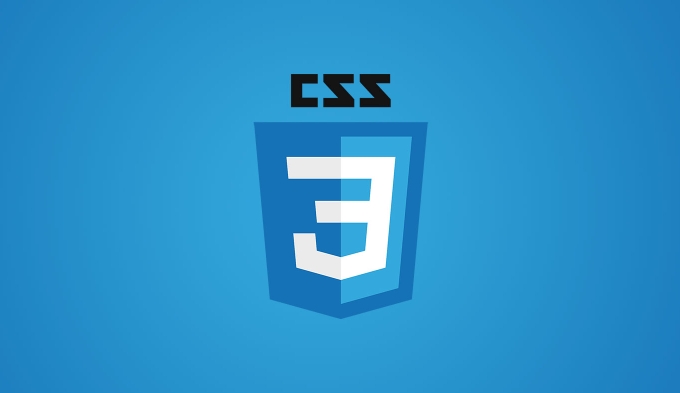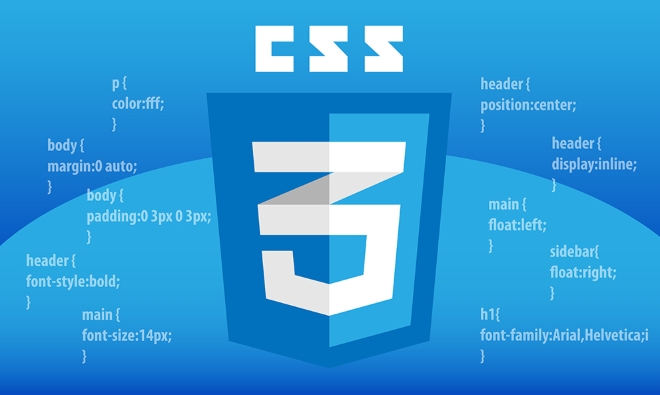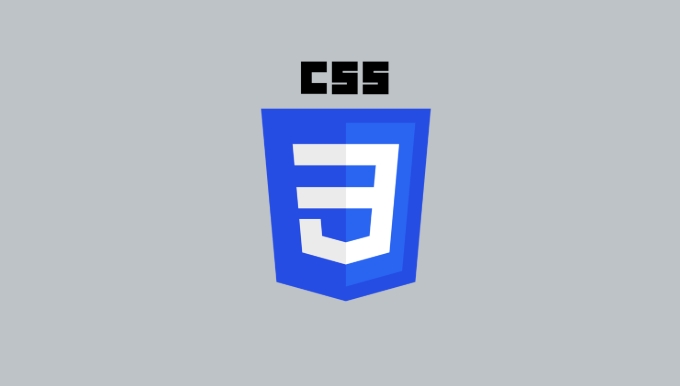When encountering problems such that the CSS style does not take effect, is overwritten or inheritance confusing, the CSS feature value and inheritance mechanism should be given priority. 1. Understand and calculate the specific weight of the selector, inline style > ID selector > Class selector, attribute selector, pseudo-class > element selector and pseudo-element. Rules with high weights will override the rules with low weights, even if the latter appears in the code; you can view the style source and weights through the "Computed" panel of the browser developer tool. 2. Avoid abuse!important, only used when overwriting third-party library styles or emergency repairs. It is also recommended to optimize the structure by increasing the selector weight, splitting the class, or adopting BEM naming specifications. 3. Pay attention to whether the attributes are inheritable. For example, color and font-size will inherit, while border and margin will not. You can confirm the source of the attribute through the Computed tag and use inherit, initial or unset to control the inheritance behavior. 4. Use the cascading order to manage style priorities, including style source, !important, rule order and other factors. Note that the CSS file loading order will affect the cascading order. You can use the developer tools to view the specific style source, or use @layer to control the cascading order to avoid style conflicts.

When encountering the problem that the CSS style does not take effect, is overwritten, or the inheritance relationship is confusing, many people's first reaction is "Is the selector written incorrectly?" In fact, it is often the CSS characteristics and inheritance at work. To solve these problems, the key is to understand their working mechanisms and learn to check and adjust.

1. Understand the priority of CSS attribute values
The "weight" of different selectors in CSS determines which style will eventually be applied to the element. This weight is specific. It is not a simple "who is behind and who takes effect", but there is a set of calculation rules:

- The inline style has the highest weight (such as
style="color: red") - ID selector (such as
#header) - Class selector, attribute selector, pseudo-class (such as
.btn,[type="text"],:hover) again - Element selectors and pseudo-elements (such as
div,::before) are weakest
For example:
/* Weight: 0,1,0 */
#main {
color: red;
}
/* Weight: 0,0,3 */
div.container .text {
color: blue;
} Although .text appears behind, the color is still red because #main has a higher weight.

Debugging suggestions:
- Open the browser developer tool, select the target element, and view what styles are applied in the "Computed" panel.
- Tools usually display the specific weight of each rule and mark the overridden style (usually crossed out state).
- If you find that a style is not effective, first check whether its selector is overwritten by a higher-weighted selector.
2. Avoid abuse!important
Some developers directly add !important when they see that the style does not take effect. Although this can solve the problem, it will cause maintenance troubles, especially when multiple people collaborate, it is easy to cause confusion.
When can it be used?
- Third-party library style overlay (such as some UI frameworks)
- Quickly fix emergency online problems (remember to follow-up optimization)
More recommended practices:
- Increase the weight of the selector, such as changing from
.btn.container .btn - Split the style into a separate class to avoid too deep nesting
- Use BEM or similar naming specifications to improve maintainability
3. Pay attention to the influence of inheritance and default styles
Not all CSS properties are automatically inherited. For example, color and font-size will inherit, while border and margin will not. If you find an element "inexplicably" with a font size or color, it is likely that it is inherited from the parent.
Common phenomena:
- Set
p { font-size: 16px }, but it actually shows that it is larger or smaller - maybe the parent container has a larger font size and is inherited - Text colors in custom components are always inconsistent with expectations - maybe inherited from global themes
Debugging suggestions:
- Check the attribute source in the "Computed" tab to confirm whether it comes from inheritance
- Use
inheritto explicitly control inheritance behavior (e.g.color: inherit) - Quickly reset properties with
initialorunsetfor testing
4. Manage style priority using cascading order
In addition to specificity, CSS also determines which rule takes effect through cascade. The order of stacking is determined by the following factors:
- Style source (user agent style, user style, author style)
- Is it used
!important - The order in which the rules appear (the latter wins under the same weight)
This means:
- When multiple CSS files are introduced, the rules of the same name in the subsequently loaded file may overwrite the previous one.
- In the style sheet introduced using
<link>, those with the order are backwards and have a higher stacking order (provided that the specificity is the same)
Debugging suggestions:
- View the file and line number of the specific style source in the developer tool
- Unify the CSS loading order to avoid logical confusion
-
@layer(supported by modern browsers) can be used appropriately to control the cascade order for key styles
Basically that's it. These questions may seem simple, but are easily overlooked in large projects. Master the basic principles of specificity and inheritance, and cooperate with browser tools, you can quickly locate and fix style conflicts.
The above is the detailed content of Debugging CSS specificity and inheritance issues. For more information, please follow other related articles on the PHP Chinese website!

Hot AI Tools

Undress AI Tool
Undress images for free

Undresser.AI Undress
AI-powered app for creating realistic nude photos

AI Clothes Remover
Online AI tool for removing clothes from photos.

Clothoff.io
AI clothes remover

Video Face Swap
Swap faces in any video effortlessly with our completely free AI face swap tool!

Hot Article

Hot Tools

Notepad++7.3.1
Easy-to-use and free code editor

SublimeText3 Chinese version
Chinese version, very easy to use

Zend Studio 13.0.1
Powerful PHP integrated development environment

Dreamweaver CS6
Visual web development tools

SublimeText3 Mac version
God-level code editing software (SublimeText3)

Hot Topics
 How can I include CSS only on some pages?
Jun 11, 2025 am 12:01 AM
How can I include CSS only on some pages?
Jun 11, 2025 am 12:01 AM
There are three ways to selectively include CSS on a specific page: 1. Inline CSS, suitable for pages that are not frequently accessed or require unique styles; 2. Load external CSS files using JavaScript conditions, suitable for situations where flexibility is required; 3. Containment on the server side, suitable for scenarios using server-side languages. This approach can optimize website performance and maintainability, but requires balance of modularity and performance.
 Flexbox vs Grid: Understanding the Key Differences in CSS Layout
Jun 10, 2025 am 12:03 AM
Flexbox vs Grid: Understanding the Key Differences in CSS Layout
Jun 10, 2025 am 12:03 AM
Flexboxisidealforone-dimensionallayouts,whileGridsuitstwo-dimensional,complexlayouts.UseFlexboxforaligningitemsinasingleaxisandGridforprecisecontroloverrowsandcolumnsinintricatedesigns.
 Creating an Auto-Closing Notification With an HTML Popover
Jun 10, 2025 am 09:45 AM
Creating an Auto-Closing Notification With an HTML Popover
Jun 10, 2025 am 09:45 AM
The HTML popover attribute transforms elements into top-layer elements that can be opened and closed with a button or JavaScript. Popovers can be dismissed a number of ways, but there is no option to auto-close them. Preethi has a technique you can u
 What is 'render-blocking CSS'?
Jun 24, 2025 am 12:42 AM
What is 'render-blocking CSS'?
Jun 24, 2025 am 12:42 AM
CSS blocks page rendering because browsers view inline and external CSS as key resources by default, especially with imported stylesheets, header large amounts of inline CSS, and unoptimized media query styles. 1. Extract critical CSS and embed it into HTML; 2. Delay loading non-critical CSS through JavaScript; 3. Use media attributes to optimize loading such as print styles; 4. Compress and merge CSS to reduce requests. It is recommended to use tools to extract key CSS, combine rel="preload" asynchronous loading, and use media delayed loading reasonably to avoid excessive splitting and complex script control.
 How to use Lotties in Figma
Jun 14, 2025 am 10:17 AM
How to use Lotties in Figma
Jun 14, 2025 am 10:17 AM
In the following tutorial, I will show you how to create Lottie animations in Figma. We'll use two colorful designs to exmplify how you can animate in Figma, and then I'll show you how to go from Figma to Lottie animations. All you need is a free Fig
 Breaking Boundaries: Building a Tangram Puzzle With (S)CSS
Jun 13, 2025 am 11:33 AM
Breaking Boundaries: Building a Tangram Puzzle With (S)CSS
Jun 13, 2025 am 11:33 AM
We put it to the test and it turns out Sass can replace JavaScript, at least when it comes to low-level logic and puzzle behavior. With nothing but maps, mixins, functions, and a whole lot of math, we managed to bring our Tangram puzzle to life, no J
 External vs. Internal CSS: What's the Best Approach?
Jun 20, 2025 am 12:45 AM
External vs. Internal CSS: What's the Best Approach?
Jun 20, 2025 am 12:45 AM
ThebestapproachforCSSdependsontheproject'sspecificneeds.Forlargerprojects,externalCSSisbetterduetomaintainabilityandreusability;forsmallerprojectsorsingle-pageapplications,internalCSSmightbemoresuitable.It'scrucialtobalanceprojectsize,performanceneed
 Does my CSS must be on lower case?
Jun 19, 2025 am 12:29 AM
Does my CSS must be on lower case?
Jun 19, 2025 am 12:29 AM
No,CSSdoesnothavetobeinlowercase.However,usinglowercaseisrecommendedfor:1)Consistencyandreadability,2)Avoidingerrorsinrelatedtechnologies,3)Potentialperformancebenefits,and4)Improvedcollaborationwithinteams.






